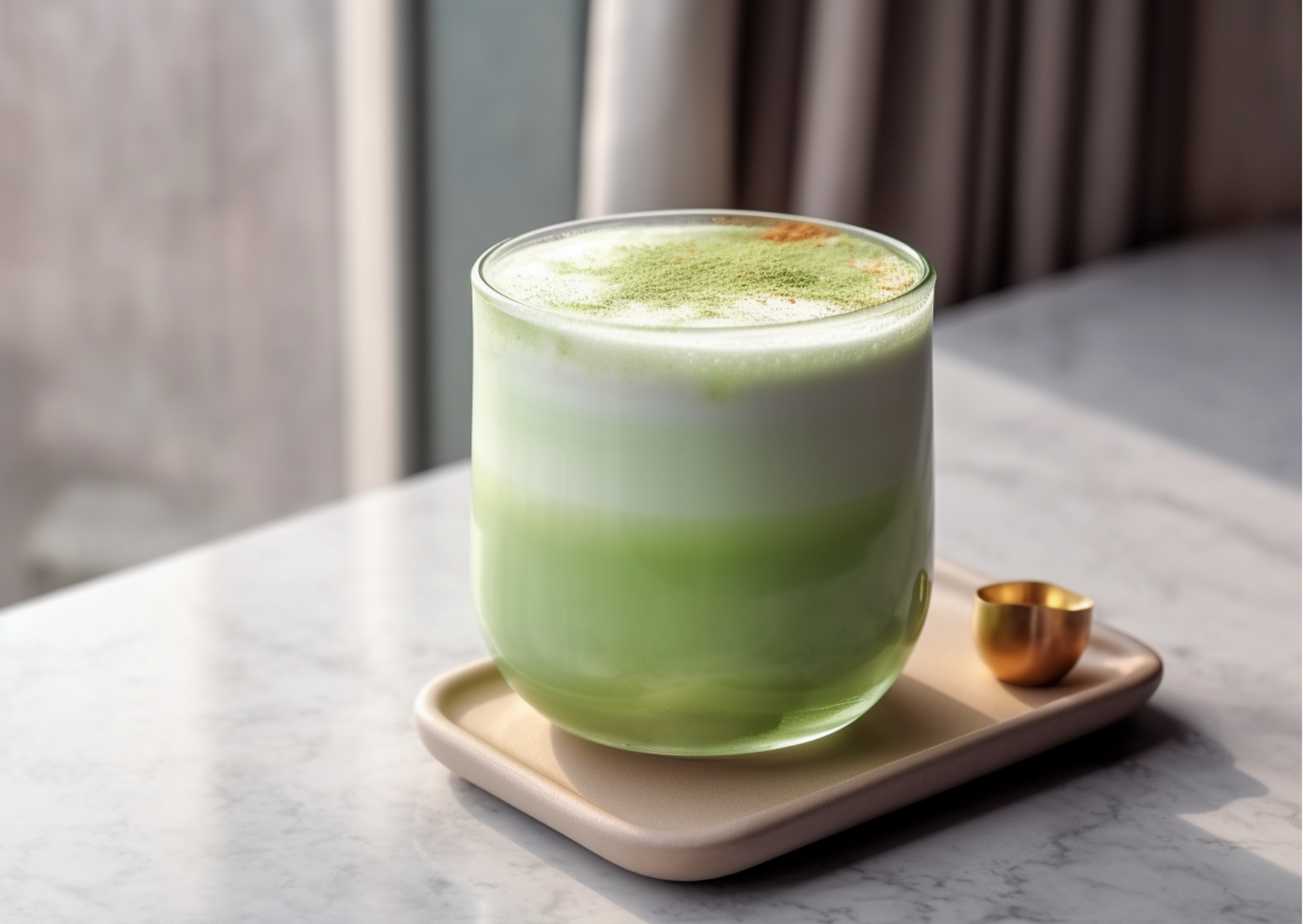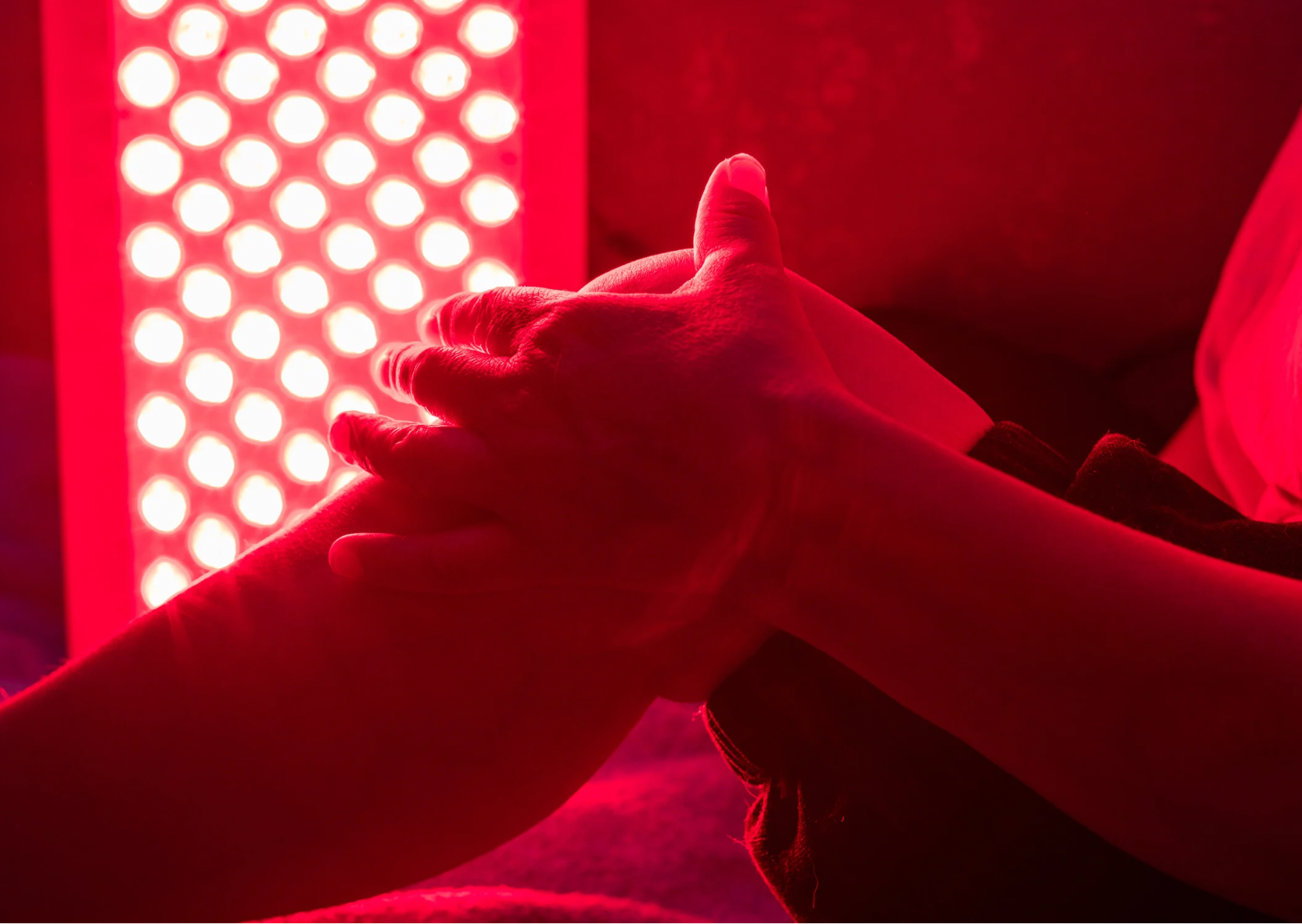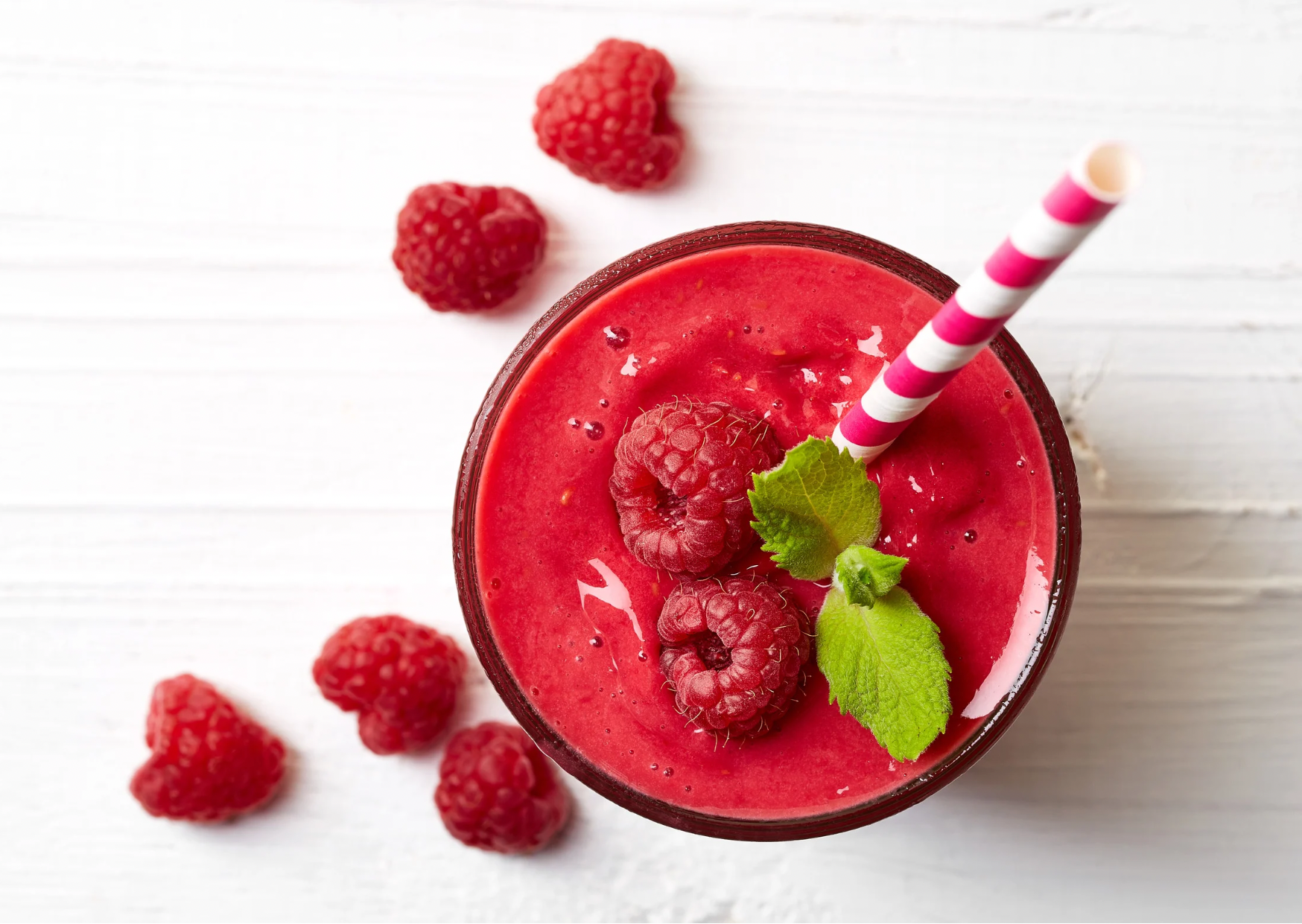If matcha or green tea is already a staple in your wellness routine, you’re well on the way.
Drinking daily matcha has been shown to enhance glowing skin, support detoxification and digestion, improve cognitive function, and decrease stress and anxiety [1, 2].
And recent science shows we can maximize matcha's benefits even further.
The Power of Matcha and Green Tea
If you’re new to matcha, it's essentially green tea leaves ground into a fine powder, offering a concentrated dose of nutrients and antioxidants.
Matcha is a great, jitter-free coffee alternative, containing about half the caffeine of a cup of coffee. The calming effects of L-theanine in matcha support energy throughout the day, alertness, and productivity while helping manage blood sugar and reduce inflammation.
So is Matcha a Superfood?
Matcha perfectly fits the definition of a superfood—nutrient-rich and beneficial for health and well-being. Here's why:
Matcha tea leaves are grown in partial shade to enhance the concentration of compounds like:
- L-theanine - Not only contributes to its unique umami flavor but also its calming properties. This compound can support healthy mood and sleep [3], improving our energy levels and cognitive function, and reducing inflammation.
- The potent antioxidant EGCG - Helps fight off harmful free radicals (molecules that damage cells via oxidative stress and contribute to chronic diseases like cancer and diabetes). ROS is an example of a free radical that in excess, can lead to photoaging - keep this in mind for later in the article!
- Flavonoids like quercetin - With anti-inflammatory, anti-oxidative, anti-carcinogenic, anti-diabetic, and anti-viral properties [4]. Quercetin may help protect against age-related diseases, help reduce swelling, kill cancer cells, and control blood sugar.
- Rutin, a flavonoid - Has antioxidant effects and supports the immune system [5].
Matcha contains about 3x more beneficial compounds than green tea, but drinking green tea (or jasmine tea derived from green tea leaves) still provides a beneficial dose.
Not All Matcha is Created Equal
Drinking a daily cup of matcha or green tea benefits many essential body functions. However, in a saturated wellness market, choosing high-quality organic matcha is crucial, as many options fall short. A Greenpeace study [6] found that 14 out of 18 green tea samples were contaminated with pesticides (that may affect fertility or cause genetic damage). If you're a frequent matcha drinker, consider sourcing cleaner brands.
If you don’t drink matcha frequently, this isn't something to worry about, but if you’re a matcha-lover, it's important to consider sourcing cleaner brands.
We love Pique Matcha if you’re looking for a quality organic brand!
Maximizing the Benefits of Matcha
Here are two simple but effective ways to transform the benefits of your matcha:
Secret #1: Combine Green Tea with Red Light Therapy
A recent study [7] suggests that antioxidants in green tea, especially EGCG, may complement the skin rejuvenation effects of red light therapy.
Red light therapy (RLT) uses specific wavelengths of red and near-infrared light to penetrate the skin and stimulate cellular activity, benefiting skin health, muscle recovery, and overall vitality. RLT may stimulate the release of small amounts of ROS (a free radical that in excess can cause damage to our cells), putting the mitochondria under small amounts of stress. A low dose of this stress can encourage our cells to perform better. However, excessive ROS from poor diet, high-stress environments, or lack of sleep can cause cell damage.
Green tea compounds like EGCG may help neutralize ROS produced by red light therapy, maximizing its benefits and protecting against oxidative damage from environmental stressors.
How did the study test this?
The green tea and red light study was conducted in two phases:
Phase 1:
Subjects received daily red light therapy for nine weeks. Their findings: “Facial wrinkle level could be significantly reduced by extended irradiation of the skin with red light”.
Phase 2:
The subject was exposed to polluted environments for 2 months (megacity in China, then Cairo, Africa), to assess how factors like air pollution, heat, and UV radiation all contributed to oxidative stress in the skin and accelerated the appearance of aging. The researchers observed that these harsh environmental conditions reversed the positive effects of the red light therapy from phase.
Subjects then received red light therapy again, as in the first phase - light at a wavelength of 670 nm (visible red light), at 72.8 mW/cm2 (a similar irradiance to LUMEBOX 5 inches away from the skin), delivering a total of 4 J/cm2.
Next, researchers applied green tea-soaked pads to the skin around the eyes for 20 minutes before therapy. They began to notice “less-pronounced wrinkle levels with shorter wrinkle valleys”, and a more “youthful” complexion after including green tea in the program.

The application of green tea might’ve helped calm things down in the skin, helping reduce inflammation and oxidative stress that were damaging the cells, while red light played a beneficial role in helping the skin repair by cellular activity [8].
Note: The findings from the study mentioned are preliminary. The authors did not disclose the number of subjects involved, and the sample size was too small to draw any definitive conclusions. The results are exciting, and we await further research into the complementary benefits of these two wellness kicks!
Secret #2: Optimize How You Prepare Your Matcha
Your favorite coffee shop might not mention (or know!) this, but how you prepare matcha affects its health benefits.
If you're drinking matcha for the health benefits like its antioxidant content, you might want to reconsider your milk choice.
Studies suggest dairy milk's proteins, like casein, might interfere with the absorption of antioxidants like EGCG, lowering their activity by 11-27%. [9]
While you still get some benefits from dairy milk, switching to plant-based milks like almond or oat, or just drinking matcha in hot water, can enhance the bioavailability of these antioxidants.
Harnessing the Synergistic Benefits of Red Light and Matcha
Matcha and red light therapy both need to be high-quality to be effective. Pick a matcha powder and red light device that is thoroughly tested for safety (as not all are created equal!). Invest in a red light device that fits your needs, whether for targeted treatments or full-body coverage and make sure it's third-party tested. LUMEBOX is great because it has been 3rd party tested to emit wavelengths at high irradiance, making it suitable for skin health, sore muscles, joint pain, relaxation, energy, mood, and more!
A 2-step routine for glowing skin:
- Use LUMEBOX for a 5-minute red light therapy session on the face in the morning, 3 to 4 times per week - red light may support the appearance of fine lines and breakouts [10].
- Drink 1 cup of matcha with plant-based milk (or hot water) for enhanced glow and skin protection.
Watch Our Detailed Video for more insights on making the most out of our favorite wellness tools!
New to red light therapy? Download our free eBook to help you choose the best device.
Already have a LUMEBOX? Download our 6 time-saving tricks guide!
Medical Disclaimer: The information contained in this blog post is intended for educational purposes only and should not be used as medical advice. Everyone responds to light differently. Testimonials are not a guarantee of the results you or anyone who uses LUMEBOX will get because your success depends entirely on your circumstances, and the studies on red light therapy shared were not specifically performed using LUMEBOX. Please check with your doctor before using red light therapy and do not change your medical treatments or lifestyle without consulting your physician first.
References:
[1] Liao, R., Parker, T., Bellerose, K., Vollmer, D., & Han, X. (2022). A green tea containing skincare system improves skin health and beauty in adults: An exploratory controlled clinical study. Cosmetics, 9(5), 96. https://doi.org/10.3390/cosmetics9050096
[2] Sokary, S., Al-Asmakh, M., Zakaria, Z., & Bawadi, H. (2022). The therapeutic potential of matcha tea: A critical review on human and animal studies. Current research in food science, 6, 100396. https://doi.org/10.1016/j.crfs.2022.11.015
[3] Baba, Y., Inagaki, S., Nakagawa, S., Kaneko, T., Kobayashi, M., & Takihara, T. (2021). Effects of l-Theanine on Cognitive Function in Middle-Aged and Older Subjects: A Randomized Placebo-Controlled Study. Journal of medicinal food, 24(4), 333–341. https://doi.org/10.1089/jmf.2020.4803
[4] Deepika, & Maurya, P. K. (2022). Health Benefits of Quercetin in Age-Related Diseases. Molecules (Basel, Switzerland), 27(8), 2498. https://doi.org/10.3390/molecules27082498
[5] Hosseinzadeh, H., & Nassiri-Asl, M. (2014). Review of the protective effects of rutin on the metabolic function as an important dietary flavonoid. Journal of endocrinological investigation, 37(9), 783–788. https://doi.org/10.1007/s40618-014-0096-3
[6] Greenpeace East Asia. (2012). Pesticide: The hidden ingredient in Chinese tea. Retrieved from https://issuu.com/greenpeace_eastasia/docs/pesticide_hidden_ingredient_report_final#:~:text=(1)%20All%20of%20the%20tea,10%20different%20kinds%20of%20pesticides.
[7] Sommer, A. P., & Zhu, D. (2009). Green tea and red light--a powerful duo in skin rejuvenation. Photomedicine and laser surgery, 27(6), 969–971. https://doi.org/10.1089/pho.2009.2547
[8] Avci, P., Gupta, A., Sadasivam, M., Vecchio, D., Pam, Z., Pam, N., & Hamblin, M. R. (2013). Low-level laser (light) therapy (LLLT) in skin: stimulating, healing, restoring. Seminars in cutaneous medicine and surgery, 32(1), 41–52.
[9] Bourassa, P., Côté, R., Hutchandani, S., Samson, G., & Tajmir-Riahi, H. A. (2013). The effect of milk alpha-casein on the antioxidant activity of tea polyphenols. Journal of photochemistry and photobiology. B, Biology, 128, 43–49. https://doi.org/10.1016/j.jphotobiol.2013.07.021
[10] Avci P, Gupta A, Sadasivam M, Vecchio D, Pam Z, Pam N, Hamblin MR. Low-level laser (light) therapy (LLLT) in skin: stimulating, healing, restoring. Semin Cutan Med Surg. 2013 Mar;32(1):41-52. PMID: 24049929; PMCID: PMC4126803.




